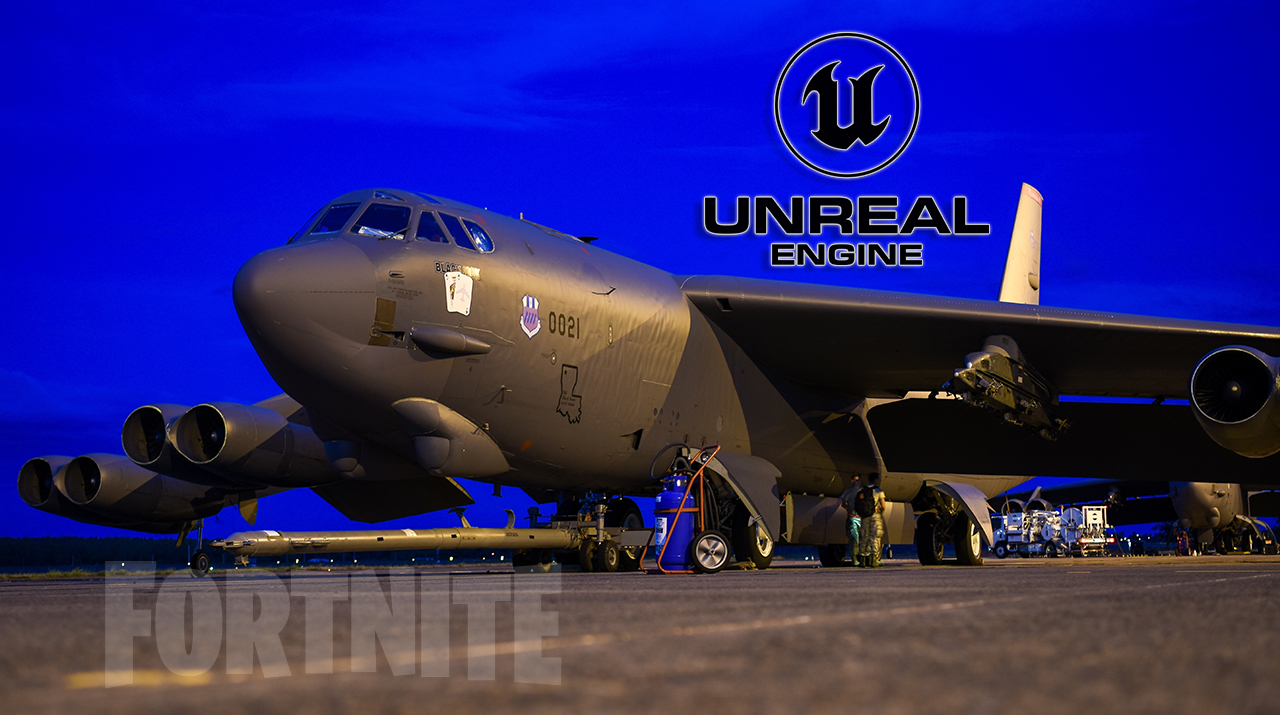Boeing relies on Fortnite technology to upgrade the B-52.
A popular 3D computer graphics game engine, developed by Epic Games and first showcased in 1998, is helping Boeing in the upgrade of the iconic Stratofortress bombers to the B-52J standard. As Defense One reported, Unreal Engine 5, the software that powers, among the others, the famous Fortnite game, is being used to generate a 3D environment that lets pilots and maintainers virtually interact with a digital representation of the B-52J, for instance to perform start up and shut down procedures of the new Rolls-Royce F130 engines.
The virtual scenario generated by the commercial graphics engine allows Boeing to apply modifications, tune configurations and get feedback well before the upgrades are implemented on the airframes, reducing cost and delivery time.
“We learn faster and we’re able to adjust quicker when we’re talking about models than [when] we are learning after we bend metal,” Jennifer Wong, Boeing’s senior director for bomber told reporters at the Air & Space Forces Association’s annual Air, Space & Cyber conference according to Defense One.
Epic Games’ Unreal Engine has been used for videogames as well as to power the graphics to augment NASCAR broadcast experience or other sporting events for several years. Now, the engine is used to power simulation supporting the Commercial Engine Replacement Program, kicked off in 2018 to find a replacement for the B-52H’s TF-33 engines, used on the Stratofortress fleet since the 1960s. The winning offer from Rolls-Royce is the F130, a military version of the BR725 engine used by the Gulfstream G650 business jet and already powering both the C-37 and E-11 BACN in service with the U.S. Air Force.
The new engines will remain on the B-52 for the reminder of the bomber’s life, through at least 2050. They will increase fuel efficiency and range, reduce emissions in unburned hydrocarbons, and significantly reduce maintenance costs.
Ground and flight test of the engines is currently on track to start on time in 2024 through 2026 and the delivery of the first lot of the re-engined B-52s (designated B-52Js) is planned in the 2026-2027 timeframe, with IOC (initial operational capability) expected in 2030.
Not only will the B-52s get new engines, they will also embed a series of avionics upgrades: the B-52J is to get a modified variant of the F/A-18EF Super Hornet’s APG-79 AESA radar; a more streamlined profile and a cleaner look with the removal of the blisters that currently house the AN/ASQ-151 Electro-Optical Viewing System (EVS); two large humps over the fuselage, near the wing roots, that could be used to host classified equipment (possibly associated with wideband satellite communications systems); and a cockpit upgrade, with “new 8 x 10 digital displays, hybrid mechanical-to-digital throttle system, new data concentrators units (2x), new engine fault maintenance recorder, new engine air data system (and) modified system panels.













